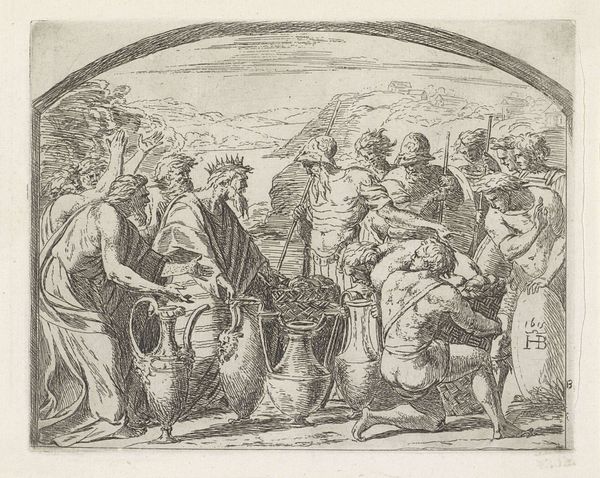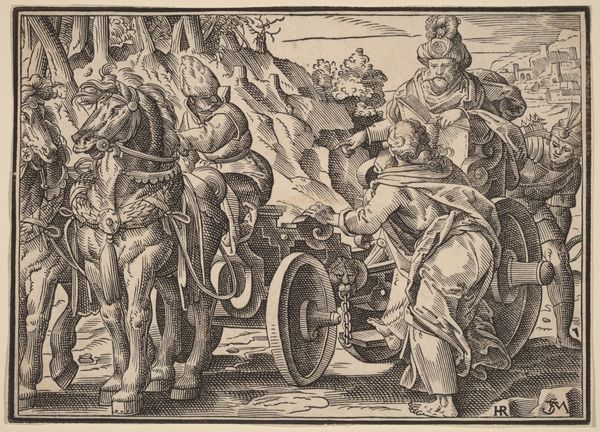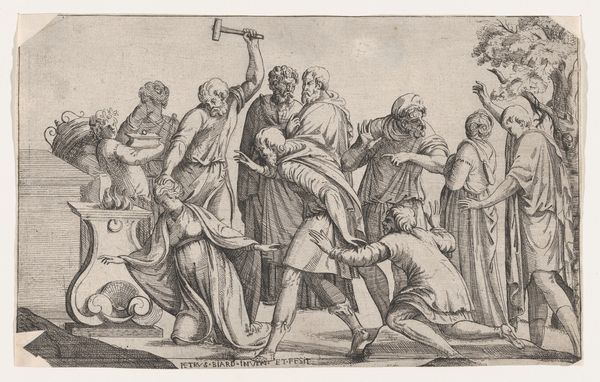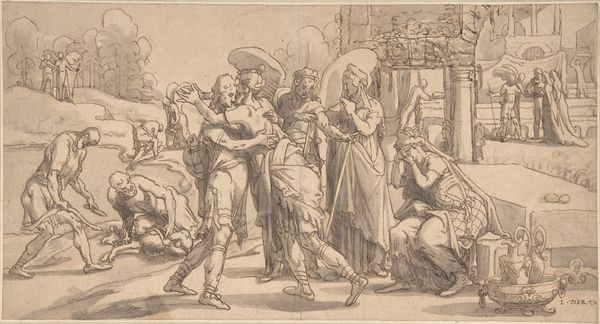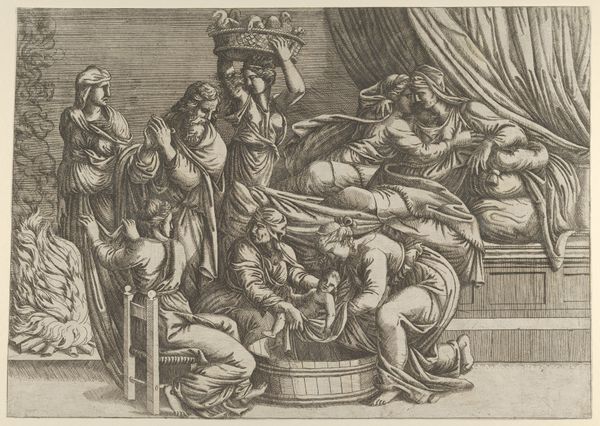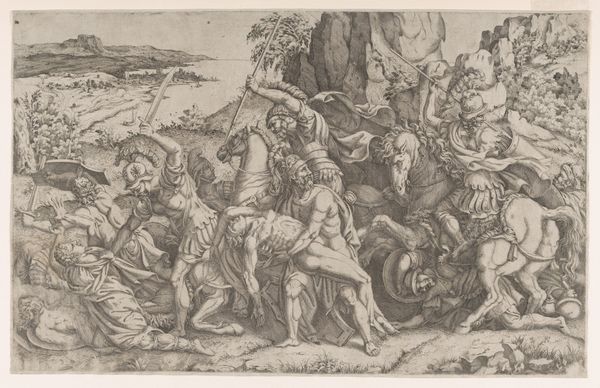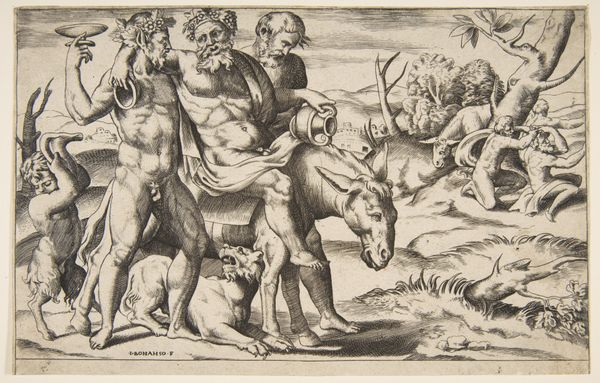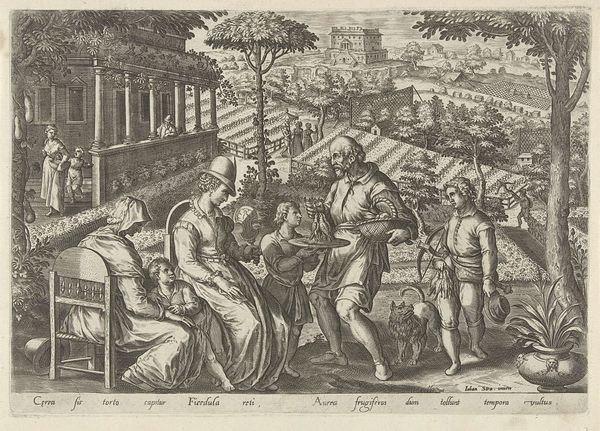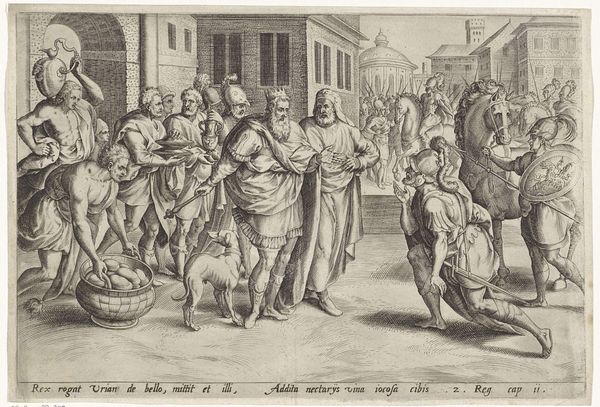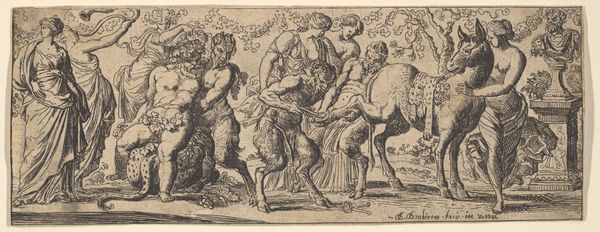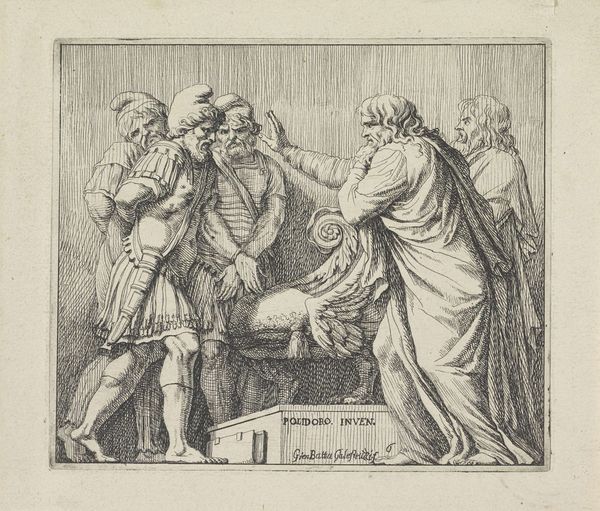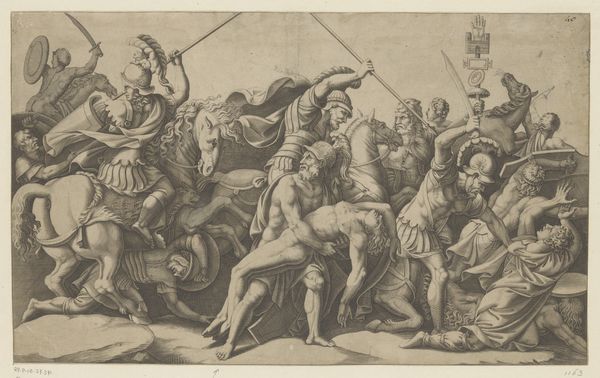
The Triumph of Cybele, after Paolo Fiammingo's 'Triumph of Earth' 1634
0:00
0:00
drawing, print
#
drawing
#
allegory
#
baroque
# print
#
figuration
#
history-painting
Dimensions: 8-l/8 x 11-1/2 in. (20.5 x 29.2 cm)
Copyright: Public Domain
Curator: What strikes me immediately about this drawing is the rather static, almost frozen quality, despite the implied subject of a triumph. Editor: Indeed. This is Hans Friedrich Schorer's "The Triumph of Cybele, after Paolo Fiammingo's 'Triumph of Earth,'" dating to 1634. It's currently housed here at the Metropolitan Museum of Art, rendered in pen and brown ink with gray wash. Its very existence speaks to the artistic dialogues of the time. Curator: Ah, Cybele! The great mother goddess. Notice how she sits enthroned on the chariot, but there is something…restrained about the depiction. Is it a reflection on the anxieties regarding female power, channeling that power into symbolism rather than actual force? Editor: That is insightful. Schorer recreates Fiammingo's allegorical depiction. By its presence in print form, it served to disseminate and codify imagery tied to feminine authority but within a very specific framework. Curator: And consider the lions. Always symbolic of Cybele's power. Here they appear more like docile companions rather than ferocious guardians. Are we meant to interpret this as dominion *over* nature or a harmonious balance *with* it? Editor: Given the period, I am tempted to say control is key here. The goddess tames not just beasts, but the fertile earth itself. Yet, the composition lacks true dynamism; everything is carefully arranged. Curator: This recalls an idea of order amidst chaos, especially with the period’s societal structures being in a flux, a point that Baroque art frequently addressed. The figures are idealized, but there is little hint of personal story. Editor: A significant piece in understanding both the period and its negotiation of symbolic power structures, especially concerning gender, the tension between the drawing's apparent dynamism, its reliance on well-established iconographic types and, yes, a kind of latent suppression, says so much about art as an articulation of social commentary. Curator: I leave seeing echoes of archetypes that continue to reverberate, reminding us of how visual symbols cement enduring emotional, cultural, and even psychological values. Editor: Absolutely. This has certainly shifted my perspective, emphasizing the importance of viewing it not just as art but as a crucial artifact within a complex socio-political environment.
Comments
No comments
Be the first to comment and join the conversation on the ultimate creative platform.
